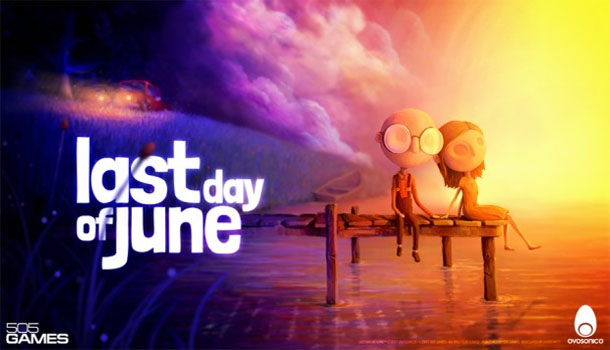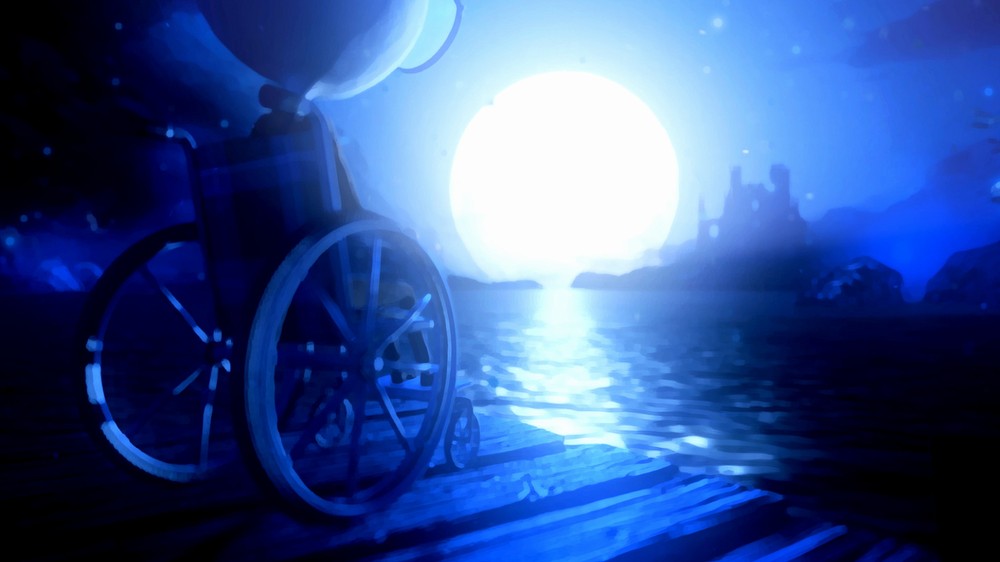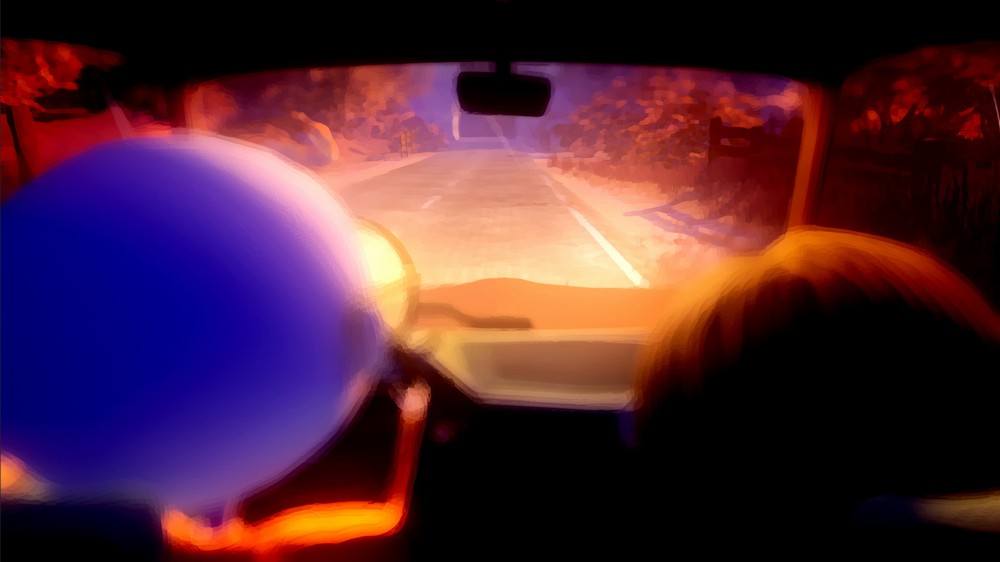Just when I thought adventure gaming couldn’t get any more original or better than Edith Finch here comes June and Carl in what can only be described as one of the most magical gameplay experiences of the year. Last Day of June is an emotional journey dealing with love and tragic loss and one man’s attempt to change past events using the unexplained power of being able to look into a portrait and becoming that person, and in doing so perhaps change the string of events culminating in painful disaster.
The game starts off innocently enough with Carl and June sitting on the end of the pier; June is doodling in her art book while Carl fetches her sweater from the car. These opening moments hint at a few innovative concepts that will become the norm for the following 4+ hour adventure. First is the stunning visual design that blurs the lines between stop-motion animation, a living painting, and a Pixar short story. The second is the simple fact that there is not a single spoken (intelligible) word in the entire game. We are left to interpret pantomime gestures, non-verbal vocal noises, and an emotionally charged score that never tells you how to feel, but just as easily supports your natural emotions at any single moment. The visuals of cutscene and gameplay are identical with only minimal button prompts indicating when and how to interact with the world around you. It’s so seamless you often don’t realize when you actually have control of the game.
Minor spoilers ahead, and in case the title didn’t clue you in, June dies almost immediately leaving Carl alone and wheelchair bound, full of guilt and regret, since he was behind the wheel of the fateful car crash that resulted in this painful reality. But after a bit of investigating it seems Carl has the ability to interact with some portraits left behind in June’s art studio, and by doing so he can enter those characters’ lives and relive the moments leading up to the fatal crash. It seems that everyone and anyone in the neighborhood may (or may not) have contributed to the car crash, so it’s up to you to stack the deck of fate and change history.
There are four main characters, each represented by a painting and each playing a potential key role in June’s death. You have the Kid, the Best Friend, the Hunter, and the Old Man. Without getting too spoilery, an example of how the system works is that we find out the boy ran out into the road chasing a ball, which caused the car crash, so when playing as the boy you need to take steps to make sure this event doesn’t happen. But it gets so much more complicated when each of these four characters start to overlap with the others. So, to not be playing with the ball the kid will need to find another activity – like flying a kite, but in doing this he must use a certain item that the best friend needs, and when she doesn’t have that item she becomes responsible for the car crash. And once you get the kid and the best friend sorted out here comes the Hunter to add even more puzzle-solving elements.
As you interact with the world and setup new paths of fate for each character the end results are presented in tarot card fashion leading up to a new potential timeline. You’ll often be forced to go back and play a previous character as new areas unlock. The kid can throw a soccer ball and knock over milk cans, so when the Hunter is blocked by a milk can, you’ll need to end his day, play that part as the kid, then replay as the Hunter. I was super-impressed with the way the designers shortened these replays; fading to black then taking you to the next critical part of the day, rather than forcing you to repeat lengthy puzzle elements.
There are also 20 memories; five per character, that can only be collected when playing as that character, so that lends a bit of replayable discovery to the game, since many of these memory bubbles are in locked areas that can’t be accessed until later in the game. There is a surprisingly amount of backstory locked away in these memory postcards (as well as an Achievement), so making the effort to find and collect them all is well worth it. Between character levels Carl will also wheel around the neighborhood at night viewing various memory dioramas, which also fleshes out the backstory. Keep in mind there are no journals or spoken dialogue. Your only knowledge of the past and present is what you infer from what you see and possible feel.
We’ve all seen enough sci-fi and fantasy movies to guess where this story is headed, but the Last Day of June managed to defy my predictions. Just when I thought I knew what was going to happen I was totally blown away by the powerful and emotional ending that was revealed only in the final few moments of the game. And then the credits roll and you have time to settle down and then the post-credit stinger plays and here come all the “feels” again.
The PC version supports up to 4K visuals and has a very distinctive look. While not as technically refined as similar genre titles, Last Day of June blasts you with saturated colors and crazy contrast along with an almost annoying depth of field when it comes to keeping things in focus. It’s like the world around you blurs into this dream state except for anything in your immediate surroundings, which is in crisp focus. And with no settings to adjust this I can only assume this was the intended effect from the designers.
I still have trouble understanding how this game works as well as it does. With faceless, voiceless characters right out of an unfinished Tim Burton movie, Last Day of June is as haunting as it is beautiful and without uttering a single spoken word tells a story more powerful than your best Hollywood drama. The gameplay is seamlessly overlaid into this interactive painting to create something wholly unique and totally original; a masterclass in interactive entertainment that will be studied for decades to come.
















I love this game and please let me play it right now.